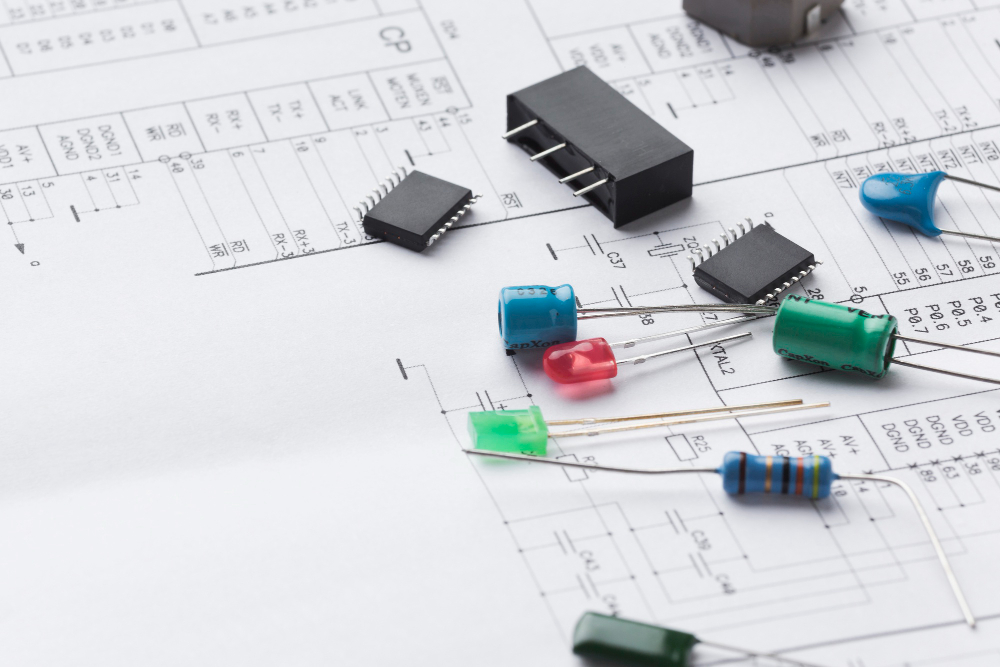Overview
Capacitive reactance is the impedance of a capacitor, and its value varies with the applied frequency.
In an RC network, when a DC voltage is applied to a capacitor, the capacitor draws charging current from the supply until it charges to the applied voltage. When the supply voltage falls, the stored charge on the capacitor decreases and the capacitor discharges.
In AC circuits, the applied voltage continuously swings between positive and negative at a rate determined by the supply frequency. The capacitor continuously charges and discharges at that supply frequency. While charging or discharging, current flows through the capacitor and is limited by the capacitor's internal impedance. This impedance is usually referred to as capacitive reactance and is denoted XC, in ohms.
Unlike a fixed resistor value such as 100 Ω, 1 kΩ, or 10 kΩ, the capacitive reactance changes with frequency. As the applied frequency increases, the reactance decreases; as frequency decreases, the reactance increases. This frequency dependence is part of the capacitor's complex impedance.
Why reactance changes with frequency
Charge transfer between the capacitor plates occurs more rapidly relative to the changing voltage at higher frequencies. At higher frequency, the capacitor moves more charge per unit time, producing larger current and appearing as a lower impedance. Therefore, a capacitor connected to a circuit with varying frequency behaves as a frequency-dependent component.
Formula
Capacitive reactance is designated XC and measured in ohms. It is calculated as:
XC = 1 / (2π f C)
where
- XC = capacitive reactance in ohms (Ω)
- π = 3.142
- f = frequency in hertz (Hz)
- C = capacitance in farads (F)
Example 1
Calculate the capacitive reactance of a 220 nF capacitor at 1 kHz, and then at 20 kHz.
From the formula, XC is inversely proportional to frequency. For the 220 nF capacitor, when the applied frequency increases from 1 kHz to 20 kHz, XC decreases accordingly, demonstrating that for a given voltage the current through the capacitor is proportional to frequency.
Reactance vs Frequency
For any fixed capacitance, XC can be plotted as a function of frequency to show the inverse relationship between reactance and frequency.
By rearranging the reactance formula, frequency can be found for a desired reactance value, or the required capacitance can be found for a given reactance at a specific frequency.
Example 2
Question: At what frequency does a 2.2 μF capacitor have a reactance of 200 Ω?
Approach: Rearrange the formula to solve for frequency, f = 1 / (2π XC C), and substitute XC and C to determine the frequency that yields the specified reactance.
Example 3
Question: If the capacitive reactance is 200 Ω and the capacitor is connected to a 50 Hz supply, what is the capacitance?
Approach: Rearrange the formula to solve for capacitance, C = 1 / (2π f XC), and substitute f and XC to determine the required capacitance.
Voltage divider networks and RC filters
Because the capacitor's reactance varies with frequency, replacing one resistor in a voltage divider with a capacitor causes the voltage drops across the two elements to change with frequency. The resistor has fixed impedance independent of frequency, while the capacitor's impedance depends on frequency. The resulting RC divider becomes frequency-dependent, which is the basis for passive low-pass and high-pass filters obtained by replacing one of the divider resistors with a suitable capacitor.
Summary
In frequency-varying circuits, a capacitor behaves like a frequency-dependent resistor: at very low frequencies it has high capacitive reactance and approximates an open circuit; at very high frequencies it has low capacitive reactance and approximates a short circuit. Remembering these two conditions is essential when using capacitive reactance to block unwanted high-frequency signals while allowing low-frequency signals to pass.
 ALLPCB
ALLPCB






